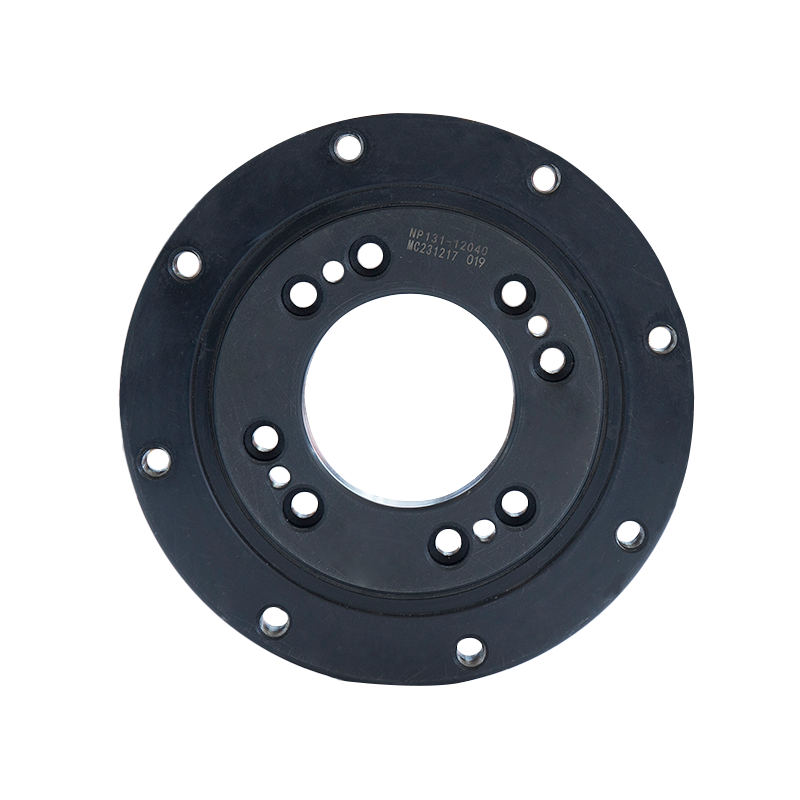How does axial clearance in a single row cross-roller slewing bearing impact performance, and how is it optimized in design?
 2025.01.25
2025.01.25
 Industry news
Industry news
The axial clearance of a single row cross-roller slewing bearing plays a significant role in its overall performance, particularly in terms of load distribution, stiffness, and precision. Axial clearance refers to the small gap between the rolling elements (cross-rollers) and the bearing races in the axial direction. The size of this clearance directly impacts the bearing's ability to carry loads, rotate smoothly, and maintain stability under different operating conditions. Here's how axial clearance affects the performance of a single row cross-roller slewing bearing and how this parameter is optimized during design:
1. Impact of Axial Clearance on Performance:
a. Load Distribution and Bearing Stiffness:
Under-Preloaded Bearings: If the axial clearance is too large, the rollers may have insufficient contact with the bearing races. This can lead to uneven load distribution, reducing the bearing's stiffness and load capacity. The bearing may experience excessive deflection or misalignment, particularly under heavy radial or axial loads.
Over-Preloaded Bearings: On the other hand, if the axial clearance is too tight or preload is too high, the rollers can experience increased friction and wear due to excessive contact between the rollers and races. This can increase the power consumption, reduce operational efficiency, and shorten the bearing's service life.
Optimized Clearance for Stiffness: An optimal axial clearance ensures that the bearing maintains high stiffness while also allowing for smooth rotation. Properly balanced clearance enables efficient load distribution, which is crucial for maintaining the bearing's precision and performance, especially in applications requiring high torque and accuracy.
b. Precision and Rotational Accuracy:
Minimized Clearance: When axial clearance is minimized (or preload is applied), the bearing is less likely to experience axial play, ensuring high rotational accuracy. This is particularly important in applications where precision motion and stability are critical, such as in robotics, medical equipment, or optical systems.
Excessive Clearance: If the clearance is too large, there may be a noticeable play or backlash during rotation, resulting in decreased precision. This can affect the performance of systems that rely on the bearing's precise positioning capabilities.
c. Wear and Longevity:
Excessive Axial Clearance: If there is too much clearance, it can lead to misalignment of the rollers, which can cause uneven wear and reduce the bearing’s longevity. The increased movement within the bearing can also lead to premature damage to the races or rolling elements.
Adequate Clearance: An optimized axial clearance allows the rollers to maintain proper contact with the races while minimizing unnecessary friction. This improves the wear resistance and overall durability of the bearing, helping it withstand long-term operational stresses.

2. Optimization of Axial Clearance During Design:
a. Calculation of Ideal Clearance:
During the design process, engineers calculate the ideal axial clearance based on several factors, including the expected load conditions, operational environment, and intended use of the bearing. This clearance is carefully chosen to balance the need for precise movement, high stiffness, and low friction.
Load and Stiffness Requirements: If the application demands higher load-carrying capacity and stiffness (e.g., for large cranes, turntables, or heavy machinery), the clearance will be reduced to minimize play. For lighter-duty applications, slightly higher clearance may be acceptable to reduce friction and wear.
b. Preload Adjustment:
Preload is applied to adjust the axial clearance by applying a force to the bearing components to reduce or eliminate the gap between the rollers and the races. The amount of preload is determined based on the load and precision requirements. A slight preload helps eliminate clearance without causing excessive friction.
Controlled Preload: A controlled preload can increase the bearing's rigidity and prevent axial play, improving performance in high-precision applications. However, too much preload can cause additional heat generation and friction, leading to increased energy consumption and potential bearing wear.
c. Tolerance Control:
Manufacturing tolerances for the rolling elements, races, and other bearing components are strictly controlled to ensure that axial clearance is optimized. Variations in the size of the rollers or races can impact clearance and, consequently, bearing performance. By maintaining tight tolerances, manufacturers ensure consistent axial clearance and improve the overall performance and reliability of the bearing.
d. Adjustment Mechanisms:
In some designs, axial clearance can be fine-tuned after installation using adjustment mechanisms. This allows for slight modifications to the bearing's preload or clearance, ensuring that the bearing operates optimally under specific load and environmental conditions.
Shims or Spacer Rings: Some slewing bearings incorporate shims or spacer rings that can be adjusted to fine-tune the axial clearance during assembly or after maintenance.
e. Lubrication Considerations:
The axial clearance also affects how lubrication is applied within the bearing. Proper clearance ensures that lubricants can adequately reach all moving parts, reducing wear and maintaining smooth operation. Too much clearance may lead to insufficient lubrication in certain areas, while too little clearance could cause increased friction and heat buildup.












